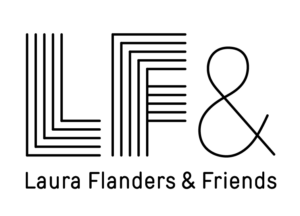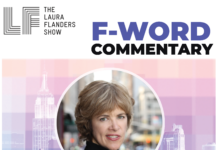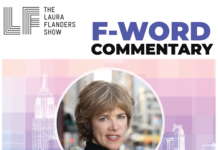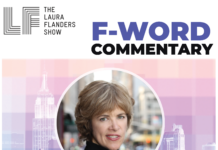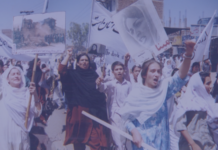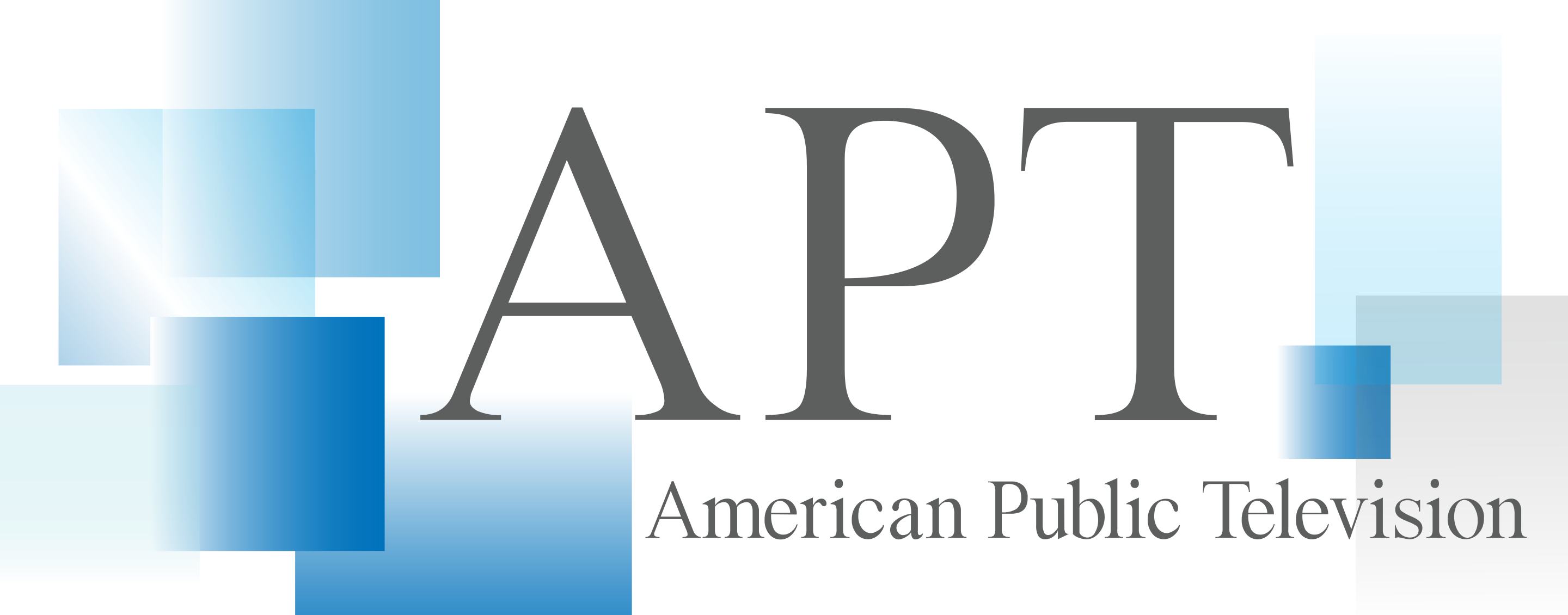Prefer to Listen?
Subscribe to our podcast to listen to this week’s episode on your favorite podcast platform.
Pilgrims, Indians, the myth of the grateful colonized person — it’s been at the core of a persistent but false Thanksgiving narrative that has distorted the true relationship between Indigenous Peoples and white colonizers dating back to Plymouth Rock. As many of us observe Thanksgiving and Indigenous Peoples’ Day, the new federal holiday, Judith LeBlanc, executive director of the Native Organizers Alliance, reminds us that “people are questioning.” In the midst of a national reckoning with white supremacy and colonial history, Indigenous people are demanding a new relationship with DC — honoring the traditional, legal, and moral rights of Native nations. In 2021, a group of Native organizers invited Laura to travel with a 25-foot totem pole from the Lummi Nation in Washington State to Washington D.C. stopping for ceremonies in communities under threat and gathering messages for the Biden-Harris administration. In DC they held a historic meeting with Interior Secretary Deb Haaland. In this episode, we hear what happened in that meeting, how Native movements are changing, among other myths, the Thanksgiving story, and where a Red Road to the future might lead us — if we followed it. November is National American Indian Heritage Month.
“. . . When Native peoples are taking a stand, whether it’s no DAPL at Standing Rock or the Keystone XL Pipeline . . . it’s not just a Native American issue. We’re defending the water and the land for tens of millions of Americans.” – Crystal Echo Hawk
“Laws and policies were written without considering Indigenous communities’ challenges or their strengths . . . Today and every day, we break barriers to those institutions and systems that were designed to keep us out.” – Secretary of the Interior, Deb Haaland
“We’re hoping this Thanksgiving, people take a look at what has happened in this country when it comes to reckoning with systemic racism . . . We bring the idea that we’re all in relationship.” – Judith LeBlanc
Guests:
- Judith LeBlanc, Director, Native Organizers Alliance
- Crystal Echo Hawk, IllumiNative, Founder & CEO
- Anahkwet/Guy Reiter, Executive Director, Menīkānaehkem Community Rebuilders; Water Protector, Menominee Indian Tribe
- Mari Margil, Executive Director, Center for Democratic and Environmental Rights
- Faith Spotted Eagle, Ihanktonwon Dakota Elder & Brave Heart Society Kunsi Member
- Deb Haaland, U.S. Secretary of the Interior
Related Episodes, Articles and More
Head to our Patreon for a list of related episodes and articles. And check out our full Politics & Society library on YouTube.
Transcript
LAURA FLANDERS: In the midst of a national reckoning with white supremacy and this country’s colonial history, Indigenous people here are demanding a new relationship with the United States government. The new relationship they seek would honor the traditional legal and moral rights of Native Nations. To drive their message home, literally, in 2021, a group of Native organizers traveled with the Lummi Nation carvers and a 25 foot totem pole from the northwest of Washington state all the way to Washington D.C., stopping for ceremonies at sacred sites and gathering messages for the Biden/Harris administration from communities under threat along the way. Through my friend Judith LeBlanc, Director at the Native Organizers Alliance which co-organized the trip, I got an invitation to travel with the totem pole for part of its journey. As some in the US celebrate Thanksgiving this year and others, the new federal holiday of Indigenous People’s Day, LeBlanc purges us to get together with people and have good food and talk, but don’t forget to question. Questioning she says, especially the myths around Thanksgiving is a good first step towards healing and transformation. In this special episode, we’ll hear about the group’s historic meeting with Interior Secretary Deb Holland in Washington D.C. and how Native organizations are changing among other damaging myths, the Thanksgiving story. We’ll also learn where a Red Road to the future might lead us if we followed it and why that just might be a good idea for the planet and all who live here. Judith LeBlanc, what a pleasure to have you with us. My thanks first off for inviting me to come with you on some of this extraordinary totem pole journey, the Red Road to Washington D.C. was a huge experience for me. The totem pole journeys have happened before, but this one was special. How so, and how did you get the idea of teaming up with the Lummi carvers this time around?
JUDITH LEBLANC: What made this totem journey so special is the political moment, the fact that native grassroots political power has finally been acknowledged as a result of our historic turnout in the 2020 elections. The Lummi carvers called me and said, after the election results were in, they said, “We’ve got to take a totem. We’ve got to take a totem to D.C. to congratulate Biden.” And I said, “We need to remind Biden of his ancestral responsibilities.” And so we did.
LAURA FLANDERS– Before we go further though, I want to play a piece about the Red Road to D.C. that was created by one of the co-sponsors of the journey, an organization called the Natural History Museum, which isn’t the museum you’re thinking of, but you can learn more about it at our website. The piece is narrated by Lummi tribal council member, Freddie Lane.
FREDDIE LANE: For the last 20 years, the House of Tears carvers of the Lummi Nation have transported totem poles around the world as a way of bringing communities together and highlighting issues. This year is our biggest journey yet. A large coalition of Indigenous and non-Indigenous groups have gathered and supported this project where we’re driving a 25 foot totem pole across the country, stopping at many sacred and historic places under threat from dams, climate change and resource extraction. As the totem pole moves, it carries the spirits of the land it visits. It’s like a battery that charges as it travels. As people touch it, they give it power. As it moves on, it shares that power with the next community it visits. This totem pole draws lines of connection between communities fighting for the land and for the future. And against an understanding of development that has been pushing the world towards extinction. The journey will end in Washington D.C. where it will be delivered to the Biden administration as a strong and important message. It’s a reminder of the promises that were made to the first peoples of these lands and waters, and to the responsibility we all share to safeguard the sacred sources of life, earth, water, sky for the generations to come.
JUDITH LEBLANC– People do not realize that our sacred sites are not only endangered because of fossil fuel extraction or very poor development plans, but also from climate chaos. And so everyone really has a stake in the protection of our constitutional right, but we had to remind people, and that’s why we brought communities together to update where things are at and the state of play and protecting their sacred site, but also to tie them together with a Red Road to see how we can continue to work together to protect all sacred sites.
LAURA FLANDERS– Crystal Echo Hawk is an enrolled member of the Pawnee Nation, National Narrative change leader and president and CEO of IllumiNative, another co-sponsor of The Red Road to D.C..
CRYSTAL ECHO HAWK– One of the most important things about the Red Road totem pole journey, you know, is that it originated with a vision from the Lummi House of Tears carvers, right? And this amazing extraordinary totem pole, and I think in the carvers, the Lummi carvers really understood how much mother earth is really deeply under threat. The totem pole journey was also just part of the grand vision of Judith LeBlanc and the Native Organizer’s Alliance, really connecting it with the movements on the ground and these movements to really build power. Where IllumiNative got involved was understanding about, well, how do we take this up to the next level? How do we begin to really shift the narrative and help Americans understand that when Native peoples are taking a stand, whether it’s NoDAPL at Standing Rock or KXL and thinking about the Fort Belknap Indian community or the Rosebud Sioux Reservation. These key battles, right, that oftentimes people just think, “Well, that’s a Native American issue”, that we’re defending the water and the land for tens of millions of Americans.
LAURA FLANDERS– What shape were the Indigenous communities in that you went through that you visited?
CRYSTAL ECHO HAWK– People are up against some big, big things, right, whether it’s their state governments, federal government, major corporations, local communities, I mean, the oil and gas industry, I learned so much when I went to Chaco Canyon and we met at one of the Navajo chapter houses, and I remember as we were pulling in, people were telling me that oftentimes be prepared to get headaches and to kind of feel nauseous because of the methane and the things that were being released into the air from the fracking. And just hearing the stories, you know, horror stories of families who had been desperately harmed and their health impacted. There’s devastation, but I think that people are feeling our power as Native peoples and feeling our power when we are joined by our allies. And I think we’re also understanding that we’re coming into a new era where we have a lot more hope with Secretary Haaland sitting there at Interior and we got to rejoice over the decision around Bears Ears and other things. So I think I felt like such a, just inspired.
LAURA FLANDERS– What is it that led you to focus on narrative and media representation? I understand it was a bunch of, a body of research that you undertook.
CRYSTAL ECHO HAWK– You know, I’ve been an organizer and an activist my entire career, and I think it was just reaching a point back in kind of 2015 of just sheer frustration and constantly feeling like our issues as Native peoples were just never taken seriously and not included. And so the Reclaiming Native Truth Project, which I founded in co-led between 2016 and 2018 really looked at what are the dominant narratives in this country and how do they shape the perceptions of not only the American public, right, and the sort of diverse demographics around that, but key institutions.
LAURA FLANDERS– Give us some examples of the findings, maybe things that even surprised you.
CRYSTAL ECHO HAWK– We found that nearly 80% of Americans knew little to nothing about us. And there was a significant percentage of Americans, particularly in places like the East Coast or places that don’t have any proximity to reservations that people aren’t even sure if Native Americans still exist anymore. As we began to kind of dive in and unpack, we began to understand that big systems such as media, entertainment, K-12 education and in our federal government were really these big systems that were perpetuating the erasure of Native peoples. And when you, through that erasure, what it serves to do is to really dehumanize Native Americans, right, in the minds of many, and also when we’re out of sight, out of mind, we don’t get included. And when you don’t see something or hear about something, they’re no longer human and they’re not a priority. And we begin to understand that the erasure and the stereotypes and misinformation really impacted policy and key things that impact the lives of Native Americans and tribes every single day.
LAURA FLANDERS– You also participated in an Indigenous Futures Survey that I would love you to talk about because it spoke to some of what I imagined were the hopes and dreams that people put on the totem as they were invited to by the Lummi carvers as it traveled across the country.
CRYSTAL ECHO HAWK– It was a national survey of about 6,400 people from all 50 states representing 401 tribes. I think what we heard, top issues for Native people in this country as we think about right now in the future are things like protecting missing and murdered women and Indigenous women and girls and members of the LGBTQ and two-spirited community. Environmental concerns are a major issue, as well as language and cultural revitalization and mental health and access to quality healthcare. I think we also heard a lot over resoundingly from Native peoples that we’re tired of the erasure, we’re tired of the way that we get portrayed in the media and our lack of representation. And so I think this is why more and more, you see more organizing across this country, and now we have these breakthrough moments, like we now have two amazing native TV shows, right, that are critically acclaimed and really successful. And we’re starting to see all kinds of different representations. And we saw based on the survey last year, right, prior to the election, that in the previous major election in 2018, that we had more than 70% of Native people reporting that they voted. And then you see in 2020 what an impact our people had. And so I think that it’s an exciting time and the more that we can amplify contemporary Native voices and issues, especially as we look ahead to the midterm elections and the next presidential ’24 that native peoples are going to continue to have a major impact in this country.
LAURA FLANDERS– Now you’ve used the term ‘ancestral responsibilities’ a few times. Can you talk about the actual treaty basis on which this relationship stands?
JUDITH LEBLANC– When I say ancestral responsibilities, I’m talking about our collective ancestors, and we all have a relationship to place, mother earth, where we live, where we walk, where we work, where we love. For Native people, we have a special relationship with the federal government because we are nations within this nation. And when people talk about treaty rights, it’s about restoring the rights that have been denied for so long, the rights that were determined by treaties signed in exchange for land, signed because we were forced off land, signed because we were hoping to fight another day. And they remained documents that even a right wing controlled Supreme Court continue to uphold because they’re constitutionally guaranteed. But many of the rights that were established by treaty with these tribal nations are human rights, the right to healthcare from birth to death, the right to housing, the right to education. So treaty rights are an important cornerstone for achieving racial justice in the present. But in the future, they will be cornerstones for the fight for human rights, for the achievement of what the rightful role of government should be for all peoples. By the banks of the Missouri River in South Dakota, homeland of the seven tribes of the Oceti Sakowin Sioux Nation, the totem journey brought people together to consider the rights of nature, a concept born out of Indigenous philosophy that’s gaining traction in law. Mari Margil is the Executive Director of the Center for Democratic and Environmental Rights, which established the first rights of nature laws in the world a decade ago and is working with communities all around the globe.
MARI MARGIL – Today’s environmental laws don’t recognize that nature possesses any inherent right, even to be, to exist. And that means that nature is treated essentially as an inanimate not living thing or property or commerce. And those environmental laws regulate how we use or exploit nature. So we legalize the very things that tribal nations and communities are trying to stop, such as fracking or mining or pipelines. We see the consequence, we see, of course, accelerating climate change, accelerating species extinction, accelerating ecosystem collapse with coral reefs and other ecosystems. And so with that, we’re beginning to see sort of a new understanding, a shift in consciousness if you will, that something really fundamental needs to change. It’s not about making these existing environmental laws better, it’s about changing our basic relationship with the natural world, human western relationship in the natural world, which means changing how we govern yourself toward nature, but also changing how nature itself is treated under the law from being this inanimate dead thing, property, to becoming rights bearing.
LAURA FLANDERS– Anahkwet, or Guy Reiter is a member of the Menominee Indian tribe of Wisconsin.
ANAHKWET/GUY REITER– The Menominee River separates the state of Wisconsin and Upper Michigan, creates a natural border. But more importantly, that’s where our people come from. We’ve been trying to fight this Canadian company on all facets of everything we could possibly challenge we’ve been challenging. We try to incorporate our identity into our strategy. And the other thing I think is very important is just paying attention to our earth. You know, watching how animals, the strategies they take to protect their home or protect their young ones. I think rights of nature give us an opportunity to take that sort of understanding, to take that sort of approach and put it into a legal framework that hopefully we can use to help defend some of our sacred areas. We’re going to keep that momentum and carry that and go from stop to stop and gather all that good medicine and leave good medicine and hopefully when we get to D.C. that we’ll have legitimate consultation and have legitimate talks with some of the leadership there.
LAURA FLANDERS– This Red Road has special potential these days. That was something that I took away from the totem journey and it has to do with the potential of that US Federal-Native Nation relationship. In the middle of that sits Interior Secretary, Deb Haaland to whom you brought the totem with its messages gathered from across the country. Can you talk about that meeting, the significance of Deb and what do you mean when you say you are looking for a new grounding for this relationship in the 21st century?
JUDITH LEBLANC– Right now, it’s a suggestion, it’s an executive order that departments of the government should consult with tribes. The history of consultation, starting with the Clinton administration is that it’s something that’s suggested, and many departments just check the box by sending an email, it’s become weaponized, the idea of consultation, they listen and then they go back to D.C. and make a decision that’s potentially very damaging. So alongside of the protection of all sacred sites, we began a public popular education campaign on the right to be a decision maker, to be at the decision making table and to achieve therefore the standard set by the UN, the United Nations Declaration on the Rights of Indigenous People, which outlines the fact that nations should relate to Indigenous nations as equals and ensure prior informed consent on all decisions that affect our lives. We believe this is the next logical step if we are truly to reckon with the systemic racism in the history of this country.
LAURA FLANDERS– When the totem pole arrived in Washington D.C., Indigenous people and their allies gathered on the National Mall. Tribal leaders from across the country rose to the podium to bring their people’s messages to the federal government. Among those was Faith Spotted Eagle.
FAITH SPOTTED EAGLE– We are the original scientists. We knew about managing water, we knew about managing plants. We continue to do that, we manage fire. At this point, more of us need to come together in a very organized best method of all to ask for co-management of these areas. We have to go over to that house and be constantly involved and support the tribal relative, our matrilineal leader Haaland, because she needs to, she’s not going to be able to do all those things that we’re asking her of. So that leaves it to us on the ground and the front line, everyone in Congress is a treaty signer. We have to pass that word and make them accountable that they signed those treaties as a citizen of this nation and it has to be enforced.
JUDITH LEBLANC– The meeting with the Secretary of the Interior was historic, tribal elected leaders, traditional leaders and grassroots community organizers met with the Secretary of the Interior to bring the messages that had been at the heart of this initiative, but to also bring her up to date of what’s going on in the places where this work is going on, and to let her know she’s not alone.
DEB HAALAND– When our nation’s capital was established, its policies were intended to exclude us, to assimilate us, laws and policies were written without considering Indigenous communities’ challenges or their strengths. And we are working hard to undo so many consequences of these actions. Today and every day we break barriers to those institutions and systems that were designed to keep us out.
LAURA FLANDERS– So you are celebrating Secretary Haaland, but at the same time in this season, people will have seen significant protests by Native Americans outside her office. Can you help us understand this?
JUDITH LEBLANC– Representation is important, it’s critical, but it’s not the destination, and now we continue to organize at the grassroots level around those issues that are of concern and are housed within the framework of the Department of the Interior. I think that protest people feel that with Line 3 that they had reached the end of the road, but we’re seeing Deb’s presence in that department as being a very powerful motivator to begin the change, structural reforms that we need.
LAURA FLANDERS– So we are broadcasting this during Thanksgiving week. Tell us where you think we are in progress from that old myth that white people colonizers developed of the grateful colonized person, and where we need to go, where the Red Road might take us.
JUDITH LEBLANC– Thanksgiving is a time when people get together and have good food. I know some Indians don’t celebrate. I love to get together with people and have good food and talk about what’s gone on in our lives. That’s a beautiful thing. But the truth is that the myth of Thanksgiving is being busted wide open. People are questioning, that’s the first step towards healing and towards political change. I think Thanksgiving is one of those days that will continue to be good meals and great football and also a time of thinking about community and thinking about history. And we’re hoping this Thanksgiving that people take a look at what has happened in this country when it comes to reckoning with the systemic racism that’s been a constant threat since the beginning of time. And also begin to recognize that Native people have not only a role to play, but are a necessary ingredient to solving many of the problems that we bring medicine with, we bring the idea that we’re all in a relationship. An Indigenous framework is about understanding that relationship and putting that relationship in balance, be it with the natural world or with each other. So I hope Thanksgiving is a time when people reflect on how it is that they can be good relatives, not only with Indigenous people, but with all of their neighbors and all of the people who, especially at this moment, are suffering at a moment of crisis.
LAURA FLANDERS– I think we’re speaking at the very beginning of November, which is Native American History Month and I put in “Native American History Month” in my Google Search bar and got quite a surprise. Is that your work?
CRYSTAL ECHO HAWK– No, I think it’s collective work. I mean, we definitely have had good relationships with Google, but I think what I love is that there’s just been growing momentum over the last couple years around the work that IllumiNative and so many of us do
across Indian country to really promote our visibility, to really invite people in to really learn about who we are today.
LAURA FLANDERS— Is there any last comment you’d like to leave us with about the tools perhaps that exist at your website or elsewhere that might help people of all sorts do better at this work?
CRYSTAL ECHO HAWK– Yeah, absolutely. I want to encourage people to follow IllumiNative on social media. We are on Instagram, Facebook, Twitter, and such a core part of our mission is about educating and building relationships with allies so people will find all kinds of wonderful information, we’re calling you in and not calling you out, books to read, films, latest, you know, contemporary issues, and so we just really invite people to not only follow us and to lean in and learn, but just to really start to think about how can you be a good ally in your own community and the places that you work and live.
LAURA FLANDERS– For more on this episode and other forward thinking content, subscribe to our free newsletter for updates, my commentaries and our full uncut conversations. We also have a podcast, it’s all at laura flanders.org.
Show Notes: Related Episodes, Articles and More
*Recommended books:
“An Indigenous Peoples’ History of the United States” by Roxanne Dunbar-Ortiz, *Learn More Here
(*Bookshop is an online bookstore with a mission to financially support local, independent bookstores. The LF Show is an affiliate of bookshop.org and will receive a small commission if you click through and make a purchase.)
Related Laura Flanders Show Episodes:
• Landback! A Teepee Town Approach to Healing and Homelessness Watch / Listen
• Indigenous People’s Power Watch / Listen
• Yellowstone at 150: Can Indigenous Stewardship Save Our Parks? Watch / Download the Podcast / Download the Full Conversation
• Divest to Decolonize: Michelle Cook and Hartman Deetz Watch / Listen
• Decolonizing Wealth Through Indigenous Leadership: Edgar Villanueva Watch
• Uncut Interview: Winona LaDuke Listen
Related Articles and Resources:
• Red Road to DC Learn More Here
• The Natural History Museum: The museum’s programs appear within other established museums, in its 15-passenger mobile museum bus, and online.
• Salmon Orca Project: The Fight to Save the Snake River Learn More Here
• Frontline Indigenous Leaders Occupy the Bureau of Indian Affairs in D.C. for the First Time Since the 1970’s by Last Real Indians Read Here
• Tribes speak for the voiceless: Totem pole created by Lummi Nation visits New Perce Tribe on its way to Washington, D.C. by Eric Barker, Lewiston Tribune Read Here
Featured ‘Music in the Middle’ of the Podcast:
“Miracle” by Supaman featuring Maimouna Youssef, a member of the Apsaalooke Nation from his album Illuminatives. Read More Here and Listen
Accessibility
The Laura Flanders Show is committed to making our programming, website and social media as accessible as possible to everyone, including those with visual, hearing, cognitive and motor impairments. We’re constantly working towards improving the accessibility of our content to ensure we provide equal access to all. If you would like to request accessibility-related assistance, report any accessibility problems, or request any information in accessible alternative formats, please contact us.
